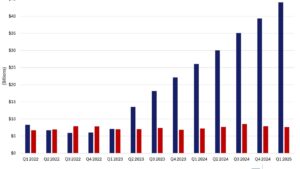Decision making in the financial markets is one of the few places where we can definitively assess the quality of a decision. We know to the penny how good or bad a particular idea is. Portfolio managers work very hard and often employ a large staff of analysts in order to get an edge in understanding a stock. Despite this effort, portfolio managers are subject to the same decision-making errors that affect all people. This article is adapted from a lecture I delivered at the United States Military Academy at West Point on the topic of Signal Interpretation.
During this lecture, I suggested that group-think and a desire to feel safe within the herd was common in the financial markets. In addition, where there is a widely misunderstood or incorrect idea in the market, it creates an opportunity for outsized returns. During that lecture, we discussed 10 different examples of poor decision-making which was widely accepted by the markets until the ideas were proven wrong. We’ll focus on two of those examples.
The first, and probably most common error, is reliance on an expert who may be both smart and capable of making the occasional error. In addition, those same smart experts may be relying on information from more junior and less experienced people. In 2013, a very successful hedge fund manager spoke at a conference considered to be the most influential platform in the business to claim that Digital Realty (ticker: DLR) was a fraud and that the management team was perpetuating a Ponzi scheme. The stock immediately cratered.
His opinion largely rested on two key points. He first claimed that the company owned computer servers, and was depreciating that equipment over 20+ years instead of the correct 3-5 years. It took very little work to determine that Digital Realty didn’t own computer servers. The company actually owned concrete earthquake-proof buildings with high-end fire suppression systems, and steel shelving that held servers owned by other companies. The buildings probably had a useful life of 100 years, and the steel shelving was good for a few hundred years.
His second key claim was that because the company paid a dividend in excess of free cash flow and was raising capital, Digital Realty was a Ponzi scheme. What made this claim tricky was that technically, each individual detail was correct, but the analysis of the whole picture was flawed.
We can make the specific accounting details available to interested readers in a longer report, but the end result was that the claim was based on an incorrect understanding of Real Estate Investment Trust Accounting.
So, we end up with one completely false claim, and another that rested on a misinterpretation of accounting practices. Our belief is that a junior analyst pitched the idea to the portfolio manager who didn’t check the false claim because it was too basic an error to even consider checking. Furthermore, they never looked past the details of the Ponzi scheme claim because the individual points of that claim were technically true. More incredibly, rather than check any of these details, other investors started selling the stock, and the press ran multiple stories about the idea. In the end, much of the stock market ended up blindly following the work of a junior analyst, and never bothered to do their own analysis.
Following the speech, the stock traded down from above $70 to the mid-$40s. It’s nearly tripled since then.
A second error we commonly see is aversion to uncertainty. This is a common failing in human decision-making where we avoid uncertainty even when a negative outcome isn’t catastrophic. An excellent example of this occurred in late 2016. While most health insurance companies were trading around 13 -15 times earnings, Anthem was stuck around 9 – 10 times earnings, a huge discount to its peers. There were two issues. First, Anthem had a large money-losing business on the healthcare exchanges. Second, a planned merger with Cigna was being challenged under anti-trust laws, and the market was concerned regulators would block the deal.
We took a large position based on the following two points. While it was true that Anthem was losing money on the health care exchanges, the company had the right to exit that business in any state at the end of any year. The market was treating the exchange losses as a permanent problem for the business when Anthem could make any of the losses go to zero at the end of any year.
While the Cigna deal would have been a positive for Anthem, our analysis was that even if the deal was blocked, the stock would go up. With the stock trading at around a 40% discount to its peer group due to the uncertainty, any negative outcome was more than accounted for in the stock price.
In October of 2016, Anthem traded as low as $113. The Cigna deal was blocked, and just over a year later, the stock was above $260. The key point was that if you were willing to overcome the human aversion to uncertainty, there was a great return available regardless of the outcome.
These are two common examples of systematic flawed decision-making processes that we see in the markets. An ability and willingness to see what others refuse to see can lead to differentiated returns. We’re happy to discuss other systematic decision-making errors with interested readers.
This article first appeared on the website for The Institute for Applied Decisional Sciences.



